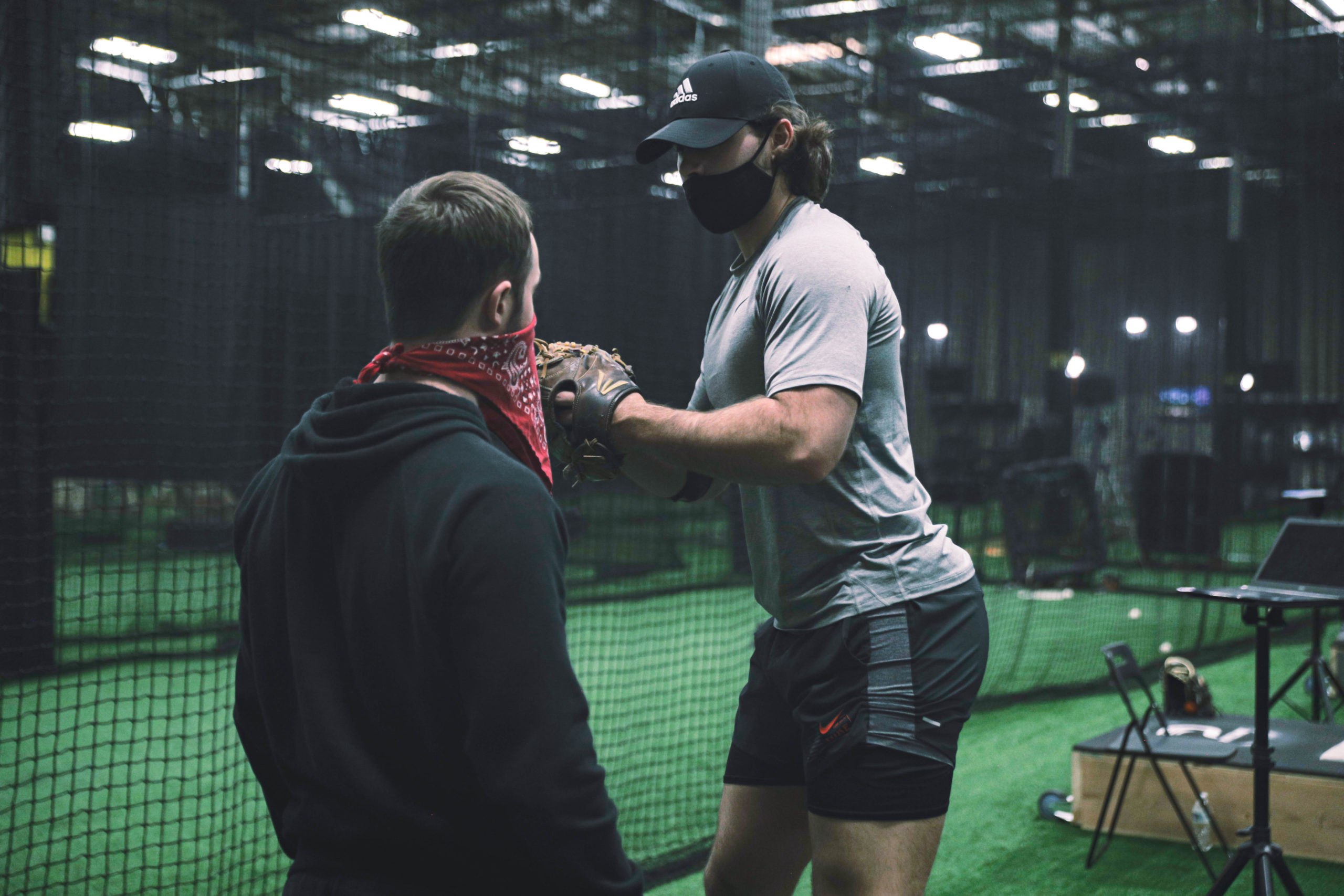Predicted Velocity Through Jump and Strength Testing

Starting Point
As we’ve collected data through our force plate strength assessment, trainees commonly ask exactly how those physical qualities show up in their sport skill (hitting or pitching). Examining how high performance metrics from our force plate assessment directionally relates with skill outcomes is a strong area of interest for us and we wanted to go beyond correlational analyses and build out our own in-house predictive models.
Our High Performance R&D Intern, Anthony Osnacz, did just this, using our force plate data to investigate how the physical qualities measured in our jump and strength assessments show up on the mound or in the batter’s box.
The current model we use to predict pitch velocity—this specific piece talks about using force plate metrics to predict a pitcher’s fastball velocity; position players’ data is used to predict bat speed—from our force plate assessments takes physical qualities in a vacuum—absent any skill, intent, readiness, or any of the many other factors important for a pitcher.
Our in-house models are not intended to tell us, “If you have x force plate metrics, you will throw y velocity.” Rather, they say, “If you have x force plate metrics, we would expect you to throw y velocity, with all other variables equal.” This allows trainers to quickly determine whether an athlete’s actual mound results are out-or underperforming their predicted fastball velocities, therefore allowing us to quickly identify and communicate lowest hanging fruit for a pitcher’s training.
Practical Application
Athletes A and B (velocities shown in table below) have a similar predicted fastball velocity from their force plate profiles, but their actual motion capture tests are 16 mph apart. This helps demonstrate how two similar force plate tests can result in different training recommendations.
| Athlete A | Athlete B | |
| Predicted Fastball Velocity (mph) | 87.9 | 87.2 |
| Actual Motion Capture Velocity (mph) | 95.8 | 79.7 |
| Predicted Velo – Actual Velo (mph) | -7.9 | +7.5 |
The typical interpretation for Athlete A’s mound velocity outperforming his predicted velocity was that his throwing skill was outperforming his general physical qualities, and with that in mind his lowest hanging fruit this offseason was improving the physical areas he lacked the most. This meant allocating more of his training economy to building strength and power in the weight room and less training economy to specific throwing work.
Athlete B is in essentially the opposite situation, with his mocap velocity underperforming his predicted velocity. Typically, an athlete in this situation needs a focus on the skill side, so this offseason he had throwing work emphasized, with reduced volume in the weight room reflected in his training economy balance.
Behind the Scenes
In the past we’ve implemented ordinary least squares regression models to predict throwing velocity off of force plate metrics, but now with a larger sample size we decided to re-run the analysis using some different methods.
We split the data 75/25 into training and test datasets respectively, then we trained a few multi-linear regression models. After an examination of relevant feature impact, multicollinearity, and error diagnostics/residual behavior (among other factors), we settled on a model with a 2.7 MAE (mean absolute error; in other words, on average the model was +/- 2.7 mph off of an athlete’s actual average velocity) and R^2 of 0.54.
The metrics that are weighted the heaviest in the model are Squat Jump Peak Power (W), RSI-modified (m/s) from the Countermovement Jump, the Reactive Strength Index (Flight Time / Ground Contact Time) recorded during the Hop Test, and Net Peak Force (N) from the Isometric Mid-Thigh Pull. All the aforementioned independent variables shared a Variance Inflation Factor under 5, which was an encouraging sign towards managing multicollinearity. Current limitations of the model include not accounting for anatomical differences such as limb length and not having any information on an athlete’s upper body strength or power.
Comment section